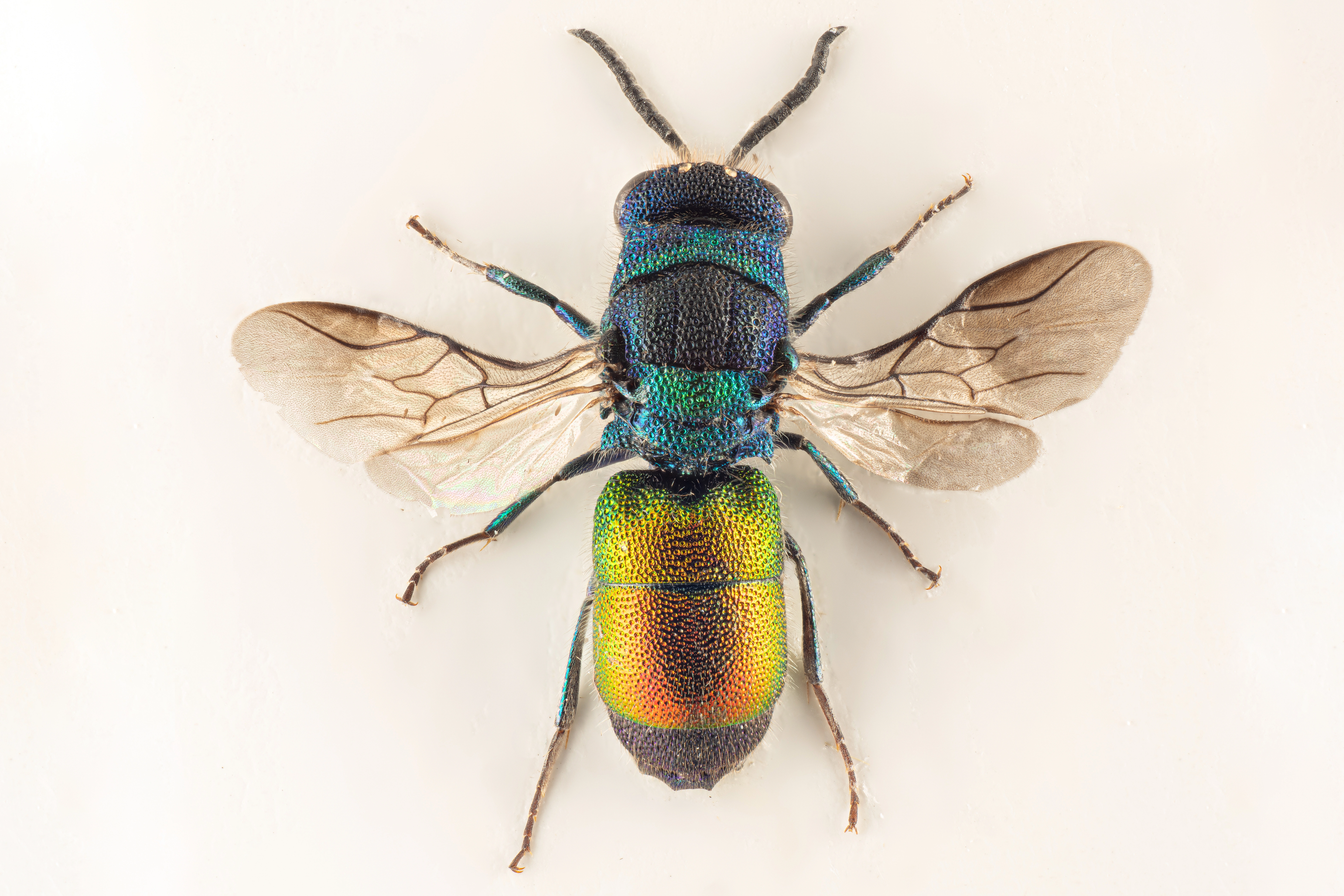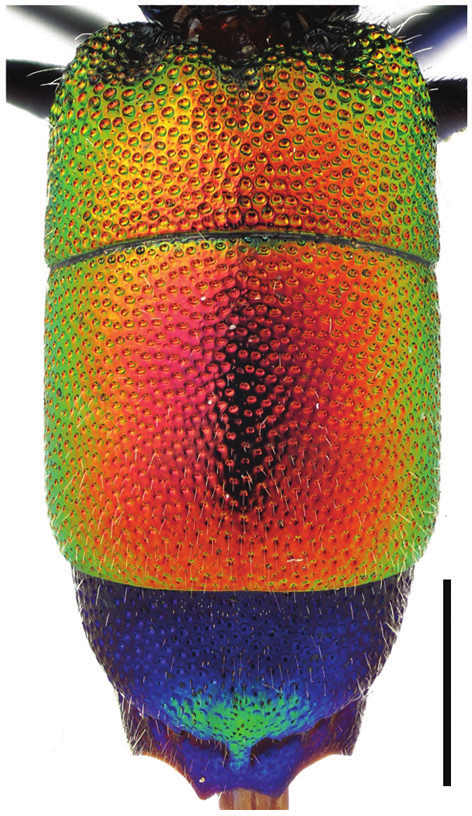Chrysis rutilans
Chrysis rutilans is a rare species with a southeastern distribution in Fennoscandia. It is found in sun exposed forest margins, and the adults often visit flowers of Apiaceae. The species resembles C. splendidula in colouration, but the body is more slender and the punctation of T2 is finer. Hosts are Gymnomerus laevipes and Ancistrocerus.
- Innhold
- Diagnosis
- Distribution
- Biology
- Remarks
Diagnosis
Figure 94
Metasoma, dorsal view: C. rutilans ♀. Scale 1 mm.
Length 5–9 mm.
The species resembles C. splendidula in colouration, but the body is more slender and the punctation of T2 is finer (Fig. 94). Also, T2 does not have a distinct smooth longitudinal keel or a raised posterior margin (Fig. 94). The black spots of S2 are longer and the head is narrower than in C. splendidula.
Distribution
Estonia, Finland, Latvia, Lithuania, Norway, Sweden. Relatively rare.
Trans-Palearctic: from Europe and northern Africa to China and Japan (Linsenmaier 1997, Rosa et al. 2014). In eastern Asia represented by ssp. extranea Linsenmaier, 1959 (Rosa et al. 2014).
Be aware that the records present in the GBIF map may be misleading for some countries due to unrevised data sets or missing information.
GBIF Taxon: Chrysis rutilans Olivier, 1790Biology
Habitat: sparsely vegetated sandy areas, forest margins.
Flight period: early June to late August. Adults are occasionally found on flowers of Apiaceae and Euphorbiaceae (Heinrich 1964, Linsenmaier 1997, Rosa 2006).
Host: Gymnomerus laevipes (Shuckard), Ancistrocerus Wesmael and Katamenes flavigularis (Blüthgen) (Vespidae) (Martynova and Fateryga 2015), possibly also species of Microdynerus Thomson (Tischendorf 1998) and Stenodynerus Saussure (our own obs.) (Vespidae), based on their similar habitat preferences and body proportions with C. rutilans. Older published host records of C. rutilans may concern C. splendidula and vice versa.
Remarks
The status of the closely related species C. insperata is still uncertain. It is difficult to separate from C. rutilans, and Kunz (1994) and several subsequent authors consider C. insperata as a nomen dubium. However, some authors (e.g. Linsenmaier 1959, 1997, Rosa 2006, Strumia 1995, 2005) considered both C. insperata and C. rutilans as valid species. Mitochondrial DNA sequences available at the Barcode of Life Data System (Ratnasingham and Hebert 2007) suggest that probably only one species is present in the Nordic countries.

